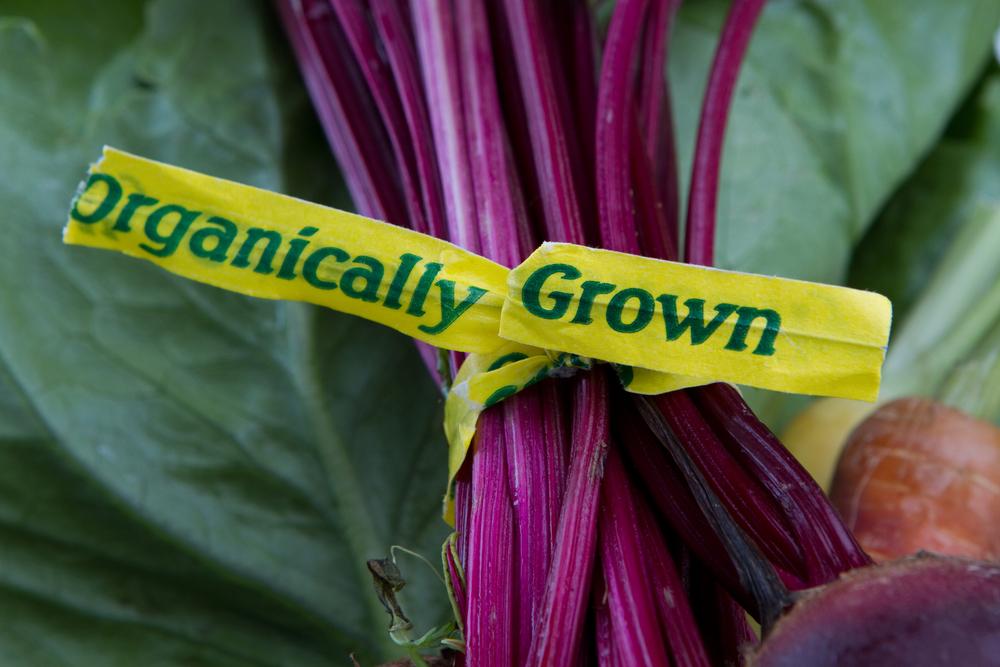 As a caregiver, you may read or hear about a lot of different nutrition “rules,” especially for athletes. Recently, a lot of those rules and taboos are around processed foods. However, healthy athletes require a lot of fuel to maintain their energy for peak performance, and often, processed foods play a role in ensuring that your athlete has the calories they need before, during, and after competition.
As a caregiver, you may read or hear about a lot of different nutrition “rules,” especially for athletes. Recently, a lot of those rules and taboos are around processed foods. However, healthy athletes require a lot of fuel to maintain their energy for peak performance, and often, processed foods play a role in ensuring that your athlete has the calories they need before, during, and after competition.
Here, TrueSport Expert Stephanie Miezin, MS, RD, CSSD, the Director of Nutrition for the NWSL team, KC Current, breaks down the differences between unprocessed, processed, and ultra-processed foods, as well as how they fit into an athlete’s diet.
Breaking down unprocessed to ultra-processed foods
In 2010, a new food classification system called NOVA was developed. This categorizes foods based on the degree of processing of a food, not the nutritional value. There are four categories within the NOVA framework: unprocessed or minimally processed foods, processed culinary ingredients, processed foods, and ultra-processed foods.
Unprocessed or minimally processed foods are those that undergo minimal handling or processing techniques, such as washing, drying, freezing, and even fermentation. These foods may have parts of the food removed, such as a peel, but do not typically have any other ingredients added. Examples include eggs, dried grains and legumes, fresh or frozen produce, 100 percent juices, and pasteurized milk.
Processed culinary ingredients are extracted from foods or nature and are used in cooking or other types of food preparation. This category includes salt, sugar, honey, butter, and oils like canola or olive oils.
Processed foods are typically unprocessed foods prepared with processed culinary ingredients. The processing techniques can preserve foods and add desirable flavor. Processed foods typically include at least a few ingredients. Examples include salted roasted nuts, fresh cheeses like mozzarella, bacon, and salted canned beans.
Ultra-processed foods are foods made with preparation methods only available with specialized machines. These foods can be made with all the above categories of foods and ingredients, as well as other man-made ingredients. Some foods and drinks unsurprisingly considered to be ultra-processed include packaged cookies, ice cream, soft drinks, energy drinks, hot dogs, and chicken nuggets. Foods and drinks especially relative to athletes that might seem more surprising to be in this category include sports drinks, breakfast cereals, chocolate milk, sweetened yogurt, gels, and many energy bars.
For more information, this article on the NOVA spectrum of unprocessed to ultra-processed foods provides further details from the group that developed NOVA.
What’s important to understand is that the NOVA classification system does not categorize foods based on nutrient density or other nutritional quality. It may seem intuitive that the less processed a food, the more nutritious it is. While it’s true that ultra-processed foods are usually not as rich in important nutrients like protein, fiber, and vitamins compared to unprocessed or minimally processed foods, there are many exceptions to that rule and we need to consider the overall mix of foods a person typically consumes when we think about how nutrition affects health and performance.
But what really matters for your athlete?
It’s important to remember that young athletes need simple carbohydrates, which often come in the form of processed and ultra-processed foods. “Ultra-processed foods can be made entirely or mostly from substances extracted from foods or derived from foods, and that may sound scary to someone without a background in food science,” says Miezin. “But examples of those types of foods are common things in the sport nutrition space, including sports drinks.”
 Athletes who are growing into their adult bodies while exerting tremendous amounts of mental and physical energy in school and sport need a lot of fuel to get them through the day, and simple carbohydrates are the fastest-burning supply. Many foods with quick-burning carbs happen to be more processed, such as when processing techniques can remove fiber from grains to allow for quicker digestion. A bagel with peanut butter and jam falls into the ultra-processed category, but it’s a great pre-workout meal or snack for many athletes, providing plenty of carbs and some protein and fat. Post-workout, a glass of chocolate milk—an ultra-processed drink—delivers protein and carbohydrates to refill muscle glycogen stores that have been depleted, while also kickstarting muscle repair.
Athletes who are growing into their adult bodies while exerting tremendous amounts of mental and physical energy in school and sport need a lot of fuel to get them through the day, and simple carbohydrates are the fastest-burning supply. Many foods with quick-burning carbs happen to be more processed, such as when processing techniques can remove fiber from grains to allow for quicker digestion. A bagel with peanut butter and jam falls into the ultra-processed category, but it’s a great pre-workout meal or snack for many athletes, providing plenty of carbs and some protein and fat. Post-workout, a glass of chocolate milk—an ultra-processed drink—delivers protein and carbohydrates to refill muscle glycogen stores that have been depleted, while also kickstarting muscle repair.
There is growing marketing around ‘healthier’ snacks as companies lean on consumer fears around processed or ultra-processed foods. However, Miezin is also quick to note that it’s easy to fall into marketing hype around certain gels or drinks. She explains that there are many everyday processed snacks that are usually more affordable and often work just as well. “Most of the professional athletes I work with are still eating things like fruit snacks, cereal, and granola bars. If these foods work for an Olympic or professional athlete, they can fuel your student-athlete too,” she says.
Don’t be afraid of processed foods
“I want caregivers to not be so afraid of processed foods and ultra-processed foods,” says Miezin. “As caregivers, I know you get a lot of mixed messages. It’s very easy to start thinking that every food except for the carrot that you dug out of your garden is bad and scary. But we’ve developed so many different technologies and types of foods to make sure that we have a safe food system. The degree of processing does not indicate the nutritional value of a food.”
And for athletes, who need more carbohydrates, it can be almost impossible to achieve optimal fueling without adding in processed foods. “It’s unrealistic to only eat unprocessed foods,” says Miezin. “We want to be getting most of our food from nutrient dense foods, and those tend to be less processed, but there is absolutely a space in a healthful diet for processed foods. And realistically, for athletes who have high energy needs, we are going to need to include some of these more processed foods because they allow more nutrient delivery in a smaller package. If we are trying to fuel an athlete with high energy needs with only potatoes, they won’t get enough.”
Focus on the whole, not a single meal
“Any one of our food choices are just one piece of the puzzle of our overall diet and its quality,” Miezin explains. “Choosing to have a burger today doesn’t mean that your athlete will be unhealthy. Nutrition is far more complicated than one food choice. Take a step back and look at the broader picture.”
For example, when grocery shopping, don’t look at a single item, look at your whole cart. “We do want most of our diet to come from nutrient-dense whole foods, which looks like a lot of fruits, vegetables, whole grains, lean proteins, beans, nuts, and seeds. But having some less nutrient-dense foods in your cart does not negate the nutrient density and benefit of those whole foods. I tell caregivers to aim for a cart that’s 80 percent whole foods and minimally processed foods, while the other 20 percent can be those more highly processed foods.”
Check the label
“One thing I’ve noticed is when someone’s evaluating a product, they look at the words on the front like ‘clean’ or ‘healthy’,” says Miezin. “These can be really misleading and make us think that just because a food has fancier packaging or trendy labels, it’s better. But look at the label on the back. Check the carbohydrates, the protein, the sodium, the ingredient list—that’s where the real information is.”
However, Miezin cautions caregivers against following the mantra, ‘if you can’t pronounce an ingredient, you shouldn’t eat it.’ “This advice is problematic on a lot of levels, since there are things that are hard to pronounce that are completely healthy and even necessary in some cases, while there are many natural-sounding ingredients that can be less helpful,” she says.
She also disagrees with the concept that the more ingredients listed on a label, the worse it is for you. “That’s just not true.” There are many nutrient-dense foods that have relatively long ingredient lists. Examples include many energy bars, some protein shakes, breakfast cereals, flavored yogurts, packaged breads and crackers, and many frozen meals. The idea that a shorter ingredient list indicates a ‘healthier’ food comes from the flawed idea that less processed foods are always better for you, and more processed foods have more ingredients. “It again comes back to if a food makes sense for a certain athlete in a certain situation, and how that food fits into the overall dietary pattern of that athlete. Plus, many of the ingredients in these foods provide benefits, such as added vitamins or better preservation for food safety,” she says.
Remember that ‘food elitism’ can play a role in your perception
Often, the conversation about processed and ultra-processed foods revolves around inexpensive items like boxed macaroni and cheese. That ultra-processed food is deemed ‘bad.’ But often, the ‘healthy’ boxed version of the same macaroni and cheese made with a gluten-free pasta isn’t considered problematic. This, Miezin explains, is food elitism, and it’s a problem for caregivers who may be struggling to feed their athletes on a tight budget.
Ultra-processed options are less expensive, but because of food elitism, buying them is stigmatized as unhealthy. Miezin reminds caregivers that it is possible to feed an athlete in a healthy way on a tight budget—and processed foods can be part of that.
________________________
Takeaway
Nutrition advice can be confusing for caregivers trying to feed their athletes enough fuel while still making sure they’re eating ‘healthy.’ But processed and even ultra-processed foods have a place in an athlete’s intake, especially in and around training. Teach your athlete that there aren’t ‘bad’ foods and that fueling enough is as important as getting a wide variety of nutrient-dense foods.



